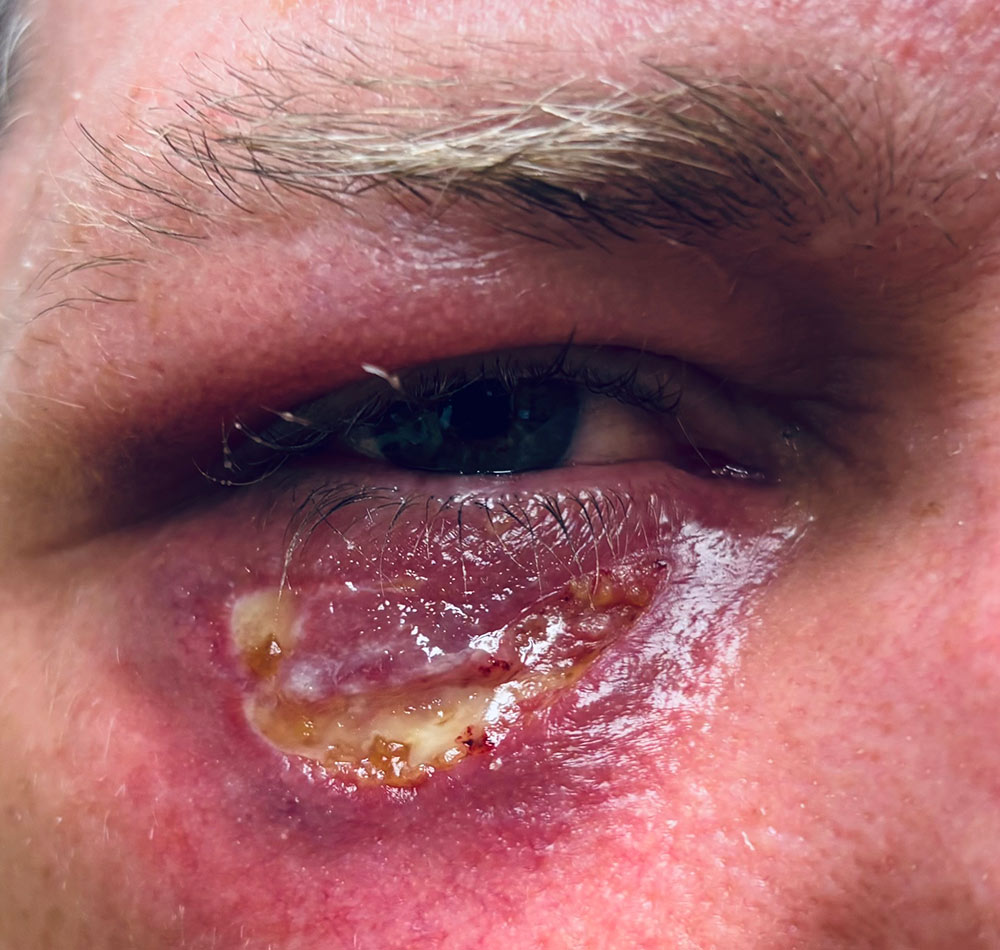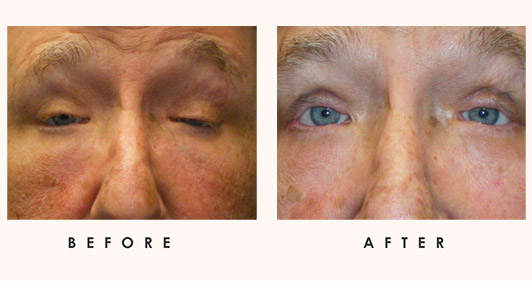Cellulitis
Jump To
Orbital and Preseptal Cellulitis
Orbital and preseptal (or periorbital) cellulitis can result in vision- and life-threatening risks so immediate evaluation and treatment is necessary.
- Orbital cellulitis is an infectious inflammatory condition involving the orbital tissues posterior to the orbital septum. Causes of orbital cellulitis include trauma, orbital fracture repair, and strabismus surgery. Pre-existing infections around the eye can extend into the orbit and result in complications.
- Periorbital cellulitis, also known as preseptal cellulitis, is an infectious inflammation of the tissues anterior to the orbital septum. This condition is more frequently diagnosed in children with upper respiratory infections. Bacterial pathogens found in preseptal cellulitis include Haemophilus influenza, Staphylococcus aureus, and Streptococcus pneumonia.
Symptoms include pain, swelling, and redness around the eye. It is also possible that a patient’s eyes bulge, along with blurred/double vision, fever, headache, fatigue and difficulty moving the eye. Complications can include vision loss, brain abscess, and meningitis.

Teens and adults can be monitored as outpatients with oral antibiotics; however, under worsening conditions, IV antibiotics and CT scan may be needed. Younger patients may require stronger antibiotics after blood cultures are taken. Infants with pre-septal cellulitis are admitted into the hospital and provided IV antibiotics. Sometimes, abscess drainage may be needed.



